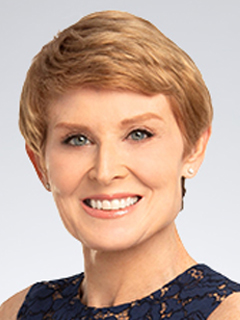Consumer constrained, inflation accelerates
Incomes and spending are weak.

July 31, 2025
Personal disposable income was unchanged after adjusting for inflation in June. Wages and salaries slowed to a crawl, while rental and dividend incomes fell. The outlier was a rebound in government transfer payments, which was buoyed by another surge in Social Security payments. Baby boomers are hitting their peak retirement age, while many younger baby boomers are claiming benefits early for fear of losing them later. Unemployment insurance payouts crept a bit higher.
Consumer spending rose a modest 0.1% after adjusting for inflation. A drop in spending on big-ticket durable goods was barely offset by increases in spending on nondurable goods and services. The slowdown in demand due to the contraction in housing market activity and higher prices due to tariffs are cutting into spending on everything from appliances to furniture and tools.
The savings rate held at 4.5% in June, the same as May. That is above the lows hit in the fourth quarter when consumer spending surged, but still well below the levels we saw pre-pandemic.
A heatwave
The personal consumption expenditure (PCE) index, which the Federal Reserve targets at 2%, jumped 0.3% in June. Revisions to earlier in the quarter raised the year-on-year implications of that increase and came in closer to the figures that we imputed from the latest GDP data. The overall index rose 2.6% from a year ago in June from an upwardly revised 2.4% in May. That is above market expectations for a 2.5% annual gain and the hottest pace since February 2025.
Food and energy prices both picked up during the month. More increases in grocery bills are likely in the months to come as tariffs work their way through packaged foods, coffee, cleaning supplies and diapers.
The core PCE, which excludes the volatile food and energy sectors and is a better indicator of where inflation is headed, increased 0.3%. Those gains and upward revisions to May pushed the year-over-year gain in the core PCE to 2.8% in May and June, reversing the narrative that inflation was cooling for much of the quarter.
The bump in core inflation was due to a surge in goods prices. Durable goods soared at the fastest year-over-year pace since December 2022, reflecting the early effects of tariffs. Nondurable goods prices moved up as well, rising at their fastest pace on a year-over-year basis since January 2025.
The super core PCE, which excludes shelter costs, rose 0.2% in June, the same as May. That translates to a 3.2% increase from a year ago, matching the average for the quarter. That is still well above the 2% pace of 2019.
One of the debates within the Fed is whether a cooling of service sector inflation is enough to offset the rise in prices due to tariffs or could we see some contagion effects on service sector prices. Much depends on how hard consumers push back against price hikes this time around.
Chairman Jay Powell addressed the dilemma during his press conference following the FOMC meeting yesterday. He said that surveys of businesses show that they are eager to pass along price hikes much like they did in the wake of the pandemic. There is often a large gap between what businesses hope to accomplish with price hikes and what they can actually execute on.
Tariffs can take six to eighteen months to work their way through the economy into profit margins and prices. We are only at the beginning of that process, with a lot more tariffs in the pipeline. The president signed yet another flurry of executive orders this week that up tariffs rates across our trading partners and on specific goods across the board.
Our internal estimates show that the effect tariff rate was only about 9-10% in May and likely moved up in June. Stockpiling ahead of tariffs, a reshuffling of supply chains and the leverage of bonded warehouses in Free Trade Zone helped mitigate the timing and blow of tariffs. Recent announced tariffs suggest we could easily see a doubling of the effective tariff rate between now and the end of the year, even with mitigation efforts.
The Fed knows that it cannot sustain full employment if inflation becomes more persistent.

Diane Swonk
KPMG Chief Economist
Bottom Line
Incomes and spending are weak, while tariffs are beginning to rear their ugly head in the inflation data. Revisions to the data suggest that more tariff inflation made its way to consumers faster than initially reported. The uneven rollout of tariffs has further clouded the outlook on which of the effects of tariffs will be more persistent – the blow to demand via a weaker labor market and higher prices or the inflation itself. The Fed knows that it cannot sustain full employment if inflation becomes more persistent. Hence, its reticence to cut rates or signal a cut, despite two dissents yesterday.
Explore more

Inflation increases, incomes drop & spending tumbles
Consumers caught between higher inflation and weaker incomes.

KPMG Economics
A source for unbiased economic intelligence to help improve strategic decision-making.

Insights from the Emerald Isle: On tour with economists abroad
Other economies are strengthening trade ties between them, leaving the US behind.
Subscribe to insights from KPMG Economics
KPMG Economics distributes a wide selection of insight and analysis to help businesses make informed decisions.
Meet our team
